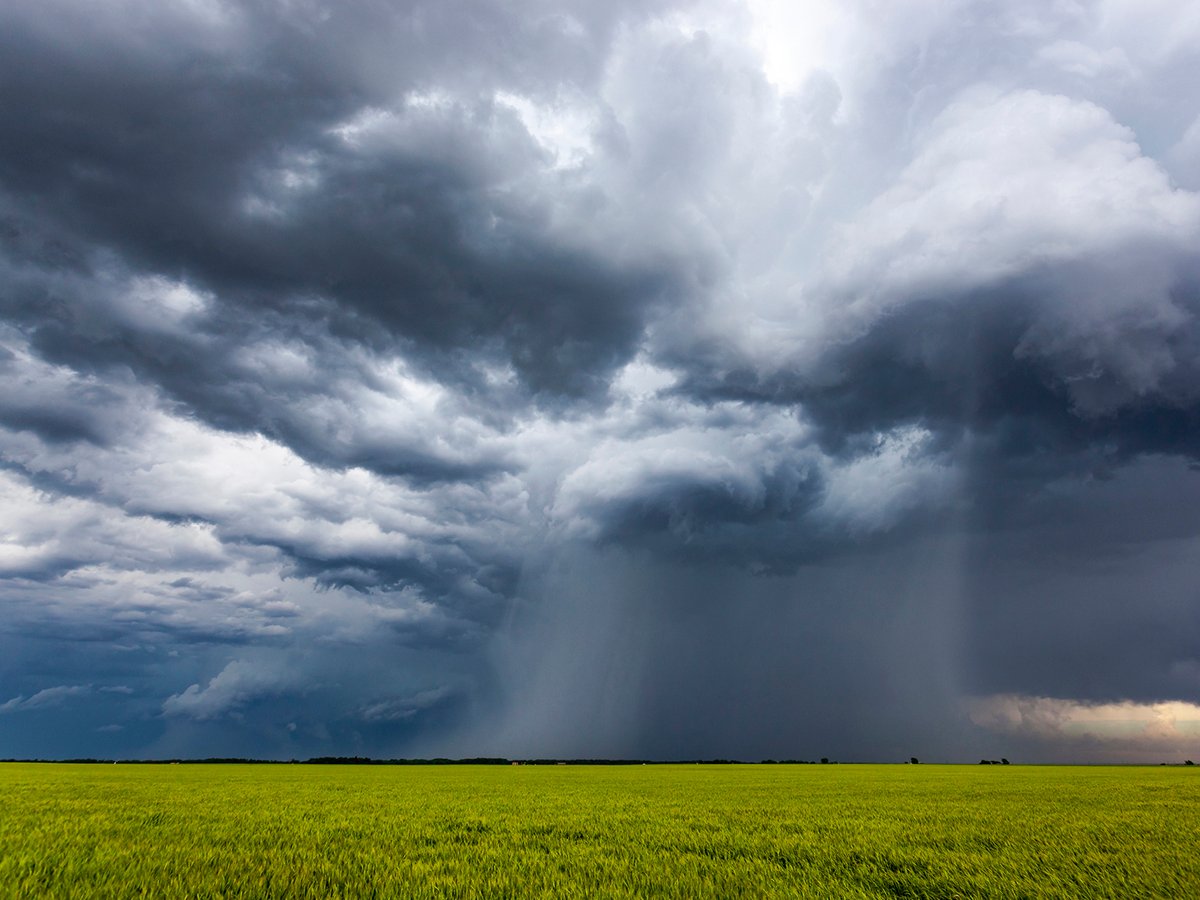A new research project near Miami, Man., will look at the potential for combining tile drainage with wetland restoration to conserve water and prevent soil nutrients from entering lakes and rivers.
The first phase of the project is to work out the details of the three-year study and choose a site within the Tobacco Creek Model Watershed, or TCMW.
Bryan Oborne, a watershed consultant with TCMW, said the area has many former wetlands that were drained over the past 100 years that could be restored and linked to new or existing tile drainage on high-value irrigated land.
Read Also

Extreme rain increases as planet warms
In this issue, we are going to wrap up our look at extreme rainfall by examining the different weather patterns that tend to be associated with these rainfall events.
He said the project could create a “made in Manitoba” solution for water management problems that have vexed farmers for decades.
“This could be a way to convince farmers to build or restore their own wetlands,” he said, adding many studies have shown that tile drainage combined with irrigation typically results in substantial yield increases.
“Solutions must work with agriculture,” he added.
The project is funded by the Manitoba Rural Adaptation Council and the Deerwood Soil and Water Management Association.
Research efforts will be overseen by Sri Ranjan, an associate professor in the University of Manitoba’s biosystems engineering department, whose specialty is irrigation, drainage and soil remediation.
The project will examine the nutrient contents of the water at the source of the tile drainage pipes and in the retention pond.
Nutrient runoff from surface water generally ends up in rivers and causes problems, he said. However, the risk of nutrient loading may be reduced if the water is allowed to infiltrate the soil and then removed with drainage tiles and stored in retention ponds or wetlands.
The project will channel runoff through filter strips, or patches of indigenous wetland grasses, to trap the nutrients. Filter strips are a new technology that has been successfully used in other areas, Ranjan said.
“The plant species that are good at absorbing the nutrients will be evaluated, too. The idea is that there are other organisms that grow on the base of the plant which can break down the nutrients and trap the sediments.”
In dry years, the water could be piped back onto the land. Or by shutting the pond’s outlet, it could be pushed back up through the subsoil in a process known as backflooding, he added.
The effects of tile drainage on agricultural yields will also be studied.
“We are going to look at all that has been done and then try to fill the gaps,” Ranjan said.
“If you want to control the quality of the water that comes off the fields, it may be inevitable. This may be the only way to control it.”
Don Flaten, a professor of soil science at the U of M, said more work needs to be done to clarify the possible link between tile drainage and nutrient loading.
“The challenges that need to be considered for any kind of drainage, whether surface or tile drainage, is where does that quantity of water go? Does it create problems for people further downstream? And what about the quality of that water?
“Does it contain any nutrients that could create problems in Lake Winnipeg that otherwise would create benefits if that water was reapplied to the farmland at a time of year when the crop might be able to use it?”
As tile drainage becomes more common, its effect on water quality needs to be evaluated.
“We don’t want to go too far down that road before evaluating what the consequences are environmentally,” he said.
Dwight Williamson, director of Manitoba Water Stewardship’s water science and management branch, said the province has begun moving on the recommendations from the Lake Winnipeg Stewardship Board’s interim report that were submitted to government in early 2005, particularly with respect to tile drainage.
Additional recommendations were received in the board’s final report issued this February, he added.
“There is action underway,” he said.
For example, runoff from tile drains is being monitored, a committee of experts has been set up to look more fully at the issue and all new applications for surface and tile drainage permits are being reviewed.
“We’ve done a fair number of things since the initial recommendations came to us, and there’s much more that needs to be done,” he said.
“We’ll be moving forward on those in part through the advice of the committee of experts.”
He said the government won’t require retention ponds for existing tile drainage systems, adding the Lake Winnipeg Stewardship Board’s recommendations to explore the practice included the phrase “where feasible” as a caveat.
“We’re not going to be moving to make that a requirement.”
Stan Wiebe, who uses tile drainage on his 8,500 acre grain and potato farm near MacGregor, Man., said it would be far too costly to require the installation of retention ponds in every field to catch runoff.
More studies are needed of field runoff on the surface and through tiles before policy-makers start legislating changes, he added.
He said if retention ponds were to be required for all tile drainage, then that same logic should apply to all field runoff because both types contain nutrients, whether tile or conventional.
“I don’t think it’s a workable idea in most situations. Maybe in a few situations it would.”














